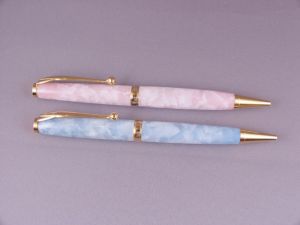brailsmt
Member
I did a search, and didn't see a post about this topic. So, I started turning my first acrylic pens. They make beautiful pens, but they are a PITA to work with. I've got nasty chip outs on 3 of the 6 pens i've turned so far. One is a just a tiny chip (well, I could fix it to just a small chip) that is barely noticeable (but of course, its all I notice). The other two have chips that either go to the tube, or go beneath the depth for the fit with the pen kit. A friend suggested I get some clear epoxy and fill the chips then shape/sand. Are there other tips to repairing chips in acrylic pens?
While I'm posting, is there a better way to glue the tubes in acrylics? Being that they are often semi-transparent, they glue I use for the tubes is visible, and IMO, ruins the smooth look of the pen, especially if I don't get enough glue in the tube. My daughter thinks it looks awesome, I don't. I'm using thick CA glue to glue the tubes, does epoxy provide a cleaner look for the glued tube?
While I'm posting, is there a better way to glue the tubes in acrylics? Being that they are often semi-transparent, they glue I use for the tubes is visible, and IMO, ruins the smooth look of the pen, especially if I don't get enough glue in the tube. My daughter thinks it looks awesome, I don't. I'm using thick CA glue to glue the tubes, does epoxy provide a cleaner look for the glued tube?

